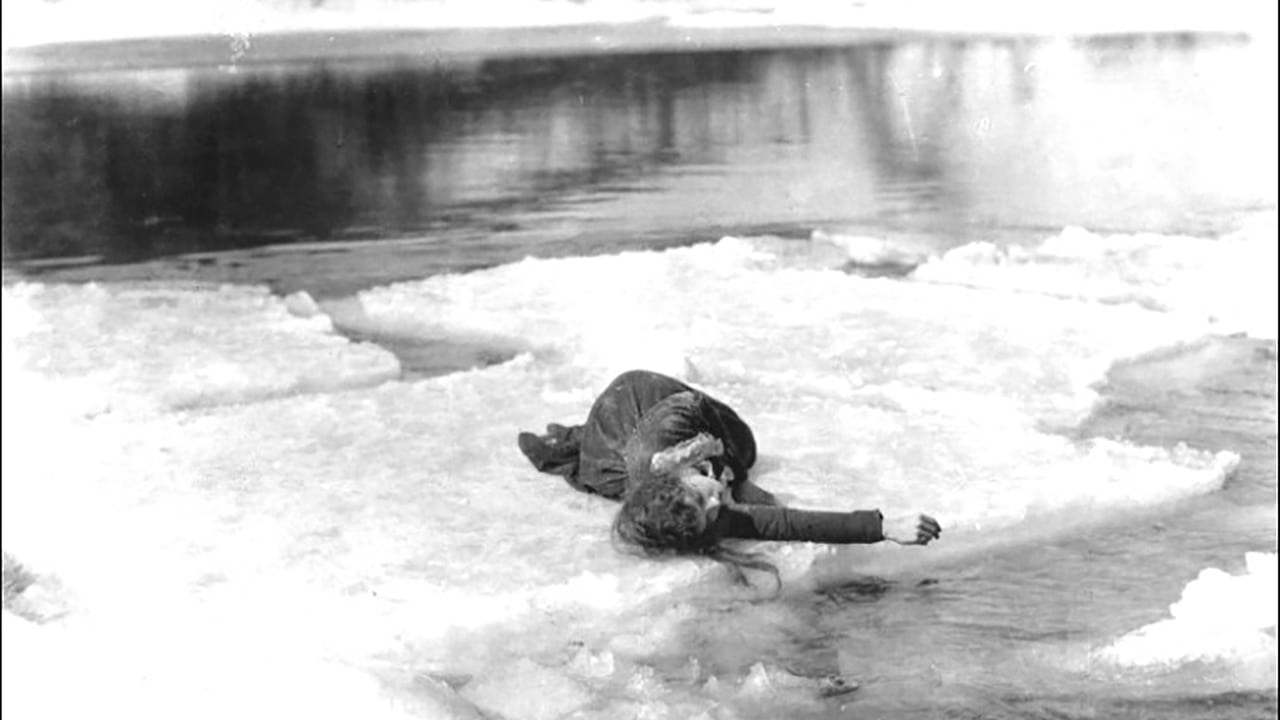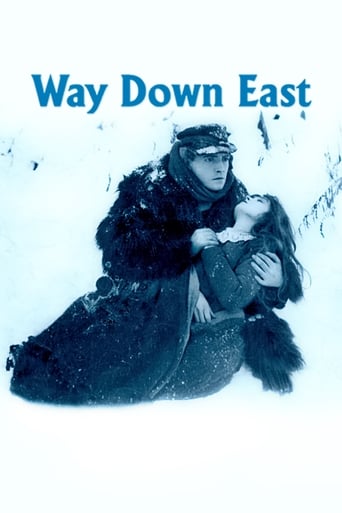

Too much about the plot just didn't add up, the writing was bad, some of the scenes were cringey and awkward,
... View Morea film so unique, intoxicating and bizarre that it not only demands another viewing, but is also forgivable as a satirical comedy where the jokes eventually take the back seat.
... View MoreIt's the kind of movie you'll want to see a second time with someone who hasn't seen it yet, to remember what it was like to watch it for the first time.
... View MoreWhile it is a pity that the story wasn't told with more visual finesse, this is trivial compared to our real-world problems. It takes a good movie to put that into perspective.
... View MoreDW Griffith's ideal was that dreams can come true or should be shown to, and that cinema should work to that effect. He carried all the other Victorian values with him, the edifying fable, usually a big sappy story, grandiose love, austere morals, the struggle against forces of darkness. These are old and mouldy relics now, and must have even seemed so at the time to young more radical cineastes abroad.But he was our first master of technique and many learned from him, Abel Gance in France, Sjostrom in Sweden, of course Chaplin, Kuleshov and his film workshop. Here he perfects the business with layers he was still struggling with in Intolerance.Intolerance always cut back and forth to very concrete moments in time, every intertitle announcing so in advance, as a result we got forced, simple metaphysics. Simple physics in fact, exhaustively so. You did not have to do any work, merely be swept as part of one or the other mob. It was clean linear history, movement in one direction.I want to direct your attention to two instances here. One is where we have just followed another segment of the misadventures of the naive country girl betrayed by the rich playboy, the film suddenly cuts away to the handsome country boy - her true love interest we presume - being jostled awake in bed as though from a bad dream and himself the dreamer of our story. This has saturated so ubiquitously in film culture, it is now considered in bad taste to signify a dream scene in this way.The other is the awesomely mounted ice-breaker finale, impressive for just the selection of cascading imagery but now parting to reveal soul, the whole fabric of the world being torn beneath the feet of our heroine to reveal a liquid universe below, stories written in waters and swept away and forgotten. In all the years of film since then we have only managed to invent a third layer on top of Griffith's two, adding in the equation the veracity of the author supplying the fabric and imagery, and have mostly spent that time transferring the whole more directly to the eye and perfecting links and arrangements.More erudite filmmakers would envision complex worlds with more clarity, but as far as nuts and bolts film mechanics are concerned a lot of it is patented here.
... View MoreAn old stage melodrama, written by Lottie Blair Parker and first performed around 1895, the story was old fashioned even in 1920. D. W. Griffith paid $175,000 for the film rights and a lot of people thought he was mad. As a film for his "muse", Lillian Gish, Griffith knew exactly what he was doing. He made the story seem so fresh and new and the "last minute rescue" on the ice wasn't found in the original play at all."A Simple Story of Plain People" was set in New England and Lillian Gish plays Anna Moore - the first scene she plays only with her expressive eyes and they show her every thought. It was truly wonderful acting. Anna is going to stay at her cousins, the Tremonts, in the hope that they will help her mother financially.She is allowed to dress for the Tremonts ball, although not invited to attend. An eccentric aunt (Florence Short) has other ideas and with a more alluring dress makes Anna the belle of the ball. Anna makes the acquaintance of Lennox Sanderson ( a very dapper Lowell Sherman), a wealthy womanizer, who determines to seduce Anna. He persuades her to agree to a secret marriage performed by a friend that he has paid, to impersonate a clergyman. Lillian Gish is so poignant and moving as Anna - at first so wide eyed and fluttering as an innocent country girl, then as the grieving young mother forced to baptise her own baby before it dies, she gives an spellbinding performance!!!She is forced to leave the lodgings because of gossip and the scene where she is trudging up the road, alone and forlorn, leaves a lump in your throat. She finds work at Squire Bartlett's (Burr McIntosh) residence, where she meets David (Richard Barthelmess). It seems Sanderson lives nearby and warns her to leave. David sees that she is upset and begs her to stay. She soon becomes a beloved member of the family, although the stern puritans know nothing of her past.The land lady from the lodging house visits the local sewing circle group, sees Anna passing and then tells all she knows about her which is quickly passed on to the Squire. He promptly turns Anna out into a raging snow storm and what a storm it was!!! The ice scene looked so real because it was. Clarine Seymour, originally given the role Mary Hay inherited, supposedly died from exposure to the almost artic conditions of the location. Lillian Gish recalls suggesting letting her arm and hair fall over the ice floe for dramatic effect and three weeks later she claimed her arm still felt like an icicle.It didn't originally receive praise from everyone - Alexander Woollcott from "The Screen" seemed to think the ice was papier mache and Robert Benchley from "Life" gave a slightly satirical review. They were both from 1920.I gave it 9 out of 10. I also agree it was slightly too long and there was a bit too much "unfunny" humour as well.Highly Recommended.
... View MoreWay Down East (1920)Directed by D.W GriffithStarring Lillian Gish, Richard BarthelmessThis big modest spectacle is one of Griffith's best! This tale full of melodrama is about Gish (Beautiful as ever!) being lost in a world full of lies and greed and suddenly she founds Barthelmess, but not all is perfect when Sherman arrives the place. Creative, entertaining, funny and sweet - maybe a bit too religious, but that doesn't care if you see that magnificent scene of Gish and Barthelmess in the ice in the waterfall. One of the greatest. A must see!
... View MoreOne of D.W. Griffith's last big commercial successes, 'Way Down East' represents much that was good in Griffith's directorial style and much that was wanting in it. Overall, it is a very solid movie and leaves the viewer satisfied in the end. It is certainly not the ideal film to show someone who has never watched a silent feature film, however.Anyone who has studied film history knows about the famous ice flow scene in which Lillian Gish put herself at tremendous risk in real-life blizzard conditions. This is the climax, but it comes only after a long and occasionally dragging journey.The lovely Ms. Gish plays Anna Moore, a naïve small town girl, tricked into a fake marriage by notorious womanizing playboy Lennox Sanderson (Lowell Sherman). Finding out about the sham only after telling Sanderson she is pregnant, she is abandoned and later evicted after both her mother and the baby die. Her past later catches up with her after she has established herself as a beloved maid in the Bartlett household, where son David (matinee idol Richard Barthlemess) is in love with her. It is when her past is revealed and Squire Bartlett (Burr McIntosh) throws her out into a blizzard that the famed ice flow sequence takes place.There are some faults in 'Way Down East.' It is long probably a bit longer than it needs to be. Plenty of time is spent in establishing the various characters, both major and minor, and the locales. There are a few spots where things seem to drag a bit. Of course Griffith strongly moralizes as usual, too. One fault that some critics have flagged that I do not necessarily agree with is Griffith's insertion of comedy relief. In many films of the era this did indeed mar films. In 'Way Down East,' though, the bumbling minor characters have a charm of their own and are naturally enough melded into the story that their actions do not seem to be at all intrusive to me. Vivia Ogden as the gossip Martha Perkins is quite good and her interaction with Seth Holcomb (Porter Strong), a goateed old goat who always seems to be at the Bartletts, is enjoyable. We are told Seth has followed her around for 20 years and she doesn't seem to mind his attention. Shy 'Professor' Creighton Hale is amusing at times, flirting clumsily with both Martha and the squire's niece Kate (Mary Hay.) Perhaps rolly polly hired hand Hi Holler (Edgar Nelson) could be dispensed with, but his screen time is limited and not a distraction. The music is at times heavy handed, but is appropriate in mood setting including the forays into comic relief.True, this is a potboiler melodrama with some heavy-handed Griffith preaching. Still, it also includes Griffith's famed build-up of intensity and speed as the climax is neared. It is also pictorially attractive, with snow-covered New England countrysides and landscapes. Also, Gish and Barthelmess never looked better. As other have noted, Gish by 1920 had fully come into her own as an actress and could make a very strong argument for being the best of all silent screen actresses.There are other silent films much easier to sit through in their entirety. This one is worth the effort, though. Griffith, warts and all, could tell a good story.
... View More